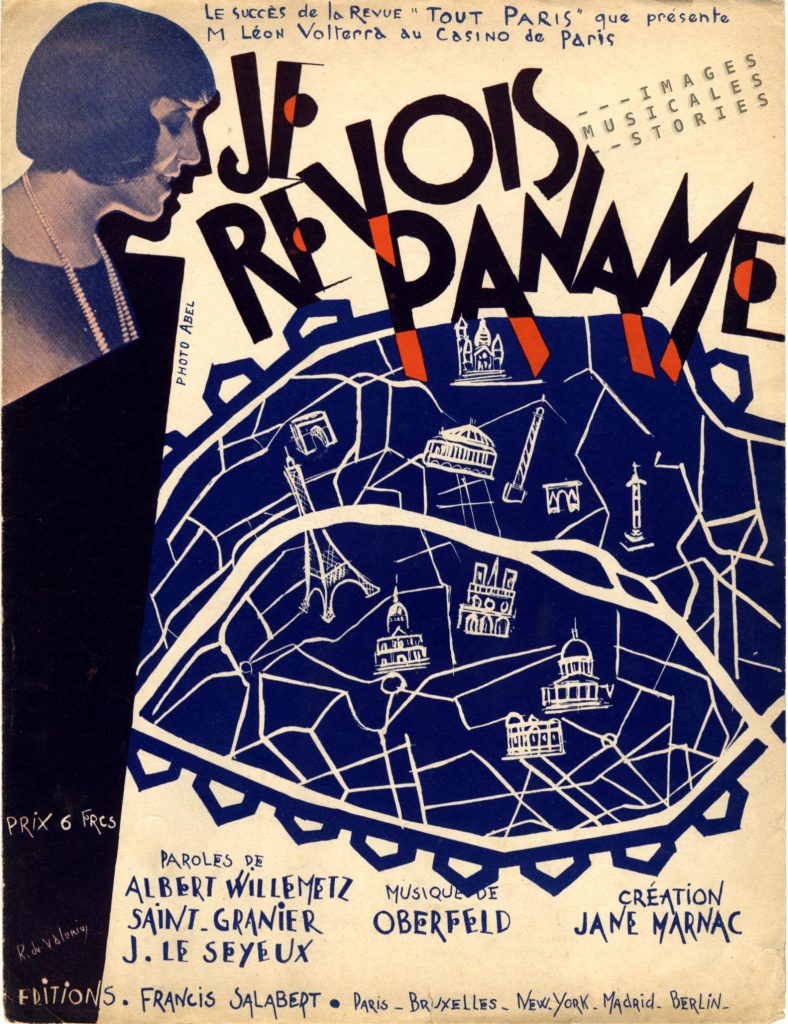
Paname is French slang for Paris. The origin of the sobriquet is not clear but this one is the most credible: it was inspired by the Panama Affair, the largest corruption scandal of the 19th century. The affair broke out in 1892, discrediting the government and shaking the foundations of the Republic.
In 1879 Ferdinand de Lesseps had proposed the construction of a 75 km channel, similar to that of Suez, in the isthmus of Panama. The project was expected to last 12 years and cost 600 million francs. Work on the Panama canal began in 1882. But soon technical difficulties and the death toll from tropical diseases undermined the project. Moreover in 1884, the funds of the French Panama Canal Company had dried up while only one-tenth of the excavations had been completed. To overcome this financial crisis Ferdinand de Lesseps himself proposed to float a lottery loan. This kind of loan was especially attractive to small savers who could always hope for an immediate premium when their numbers were drawn for payback.

To obtain the approval of Parliament for the lottery loan, the instigators plotted a multi-million bribery campaign which would be managed by three men. One of them was the financier Baron Jacques de Reinach who would try to persuade the big fish. He distributed money between politicians, journalists and the haut monde so that they would embellish the company’s situation and support the lottery loan. The adventurer Emile Arton (Aaron by his real name) managed the smaller fry, minor politicians and provincial newspapers. Arton was a dubious entrepreneur, boasting a career of bankruptcies. The third man was Cornélius Herz, an American charlatan and the greatest rogue of the three. In the end he even managed to blackmail his associate de Reinach.
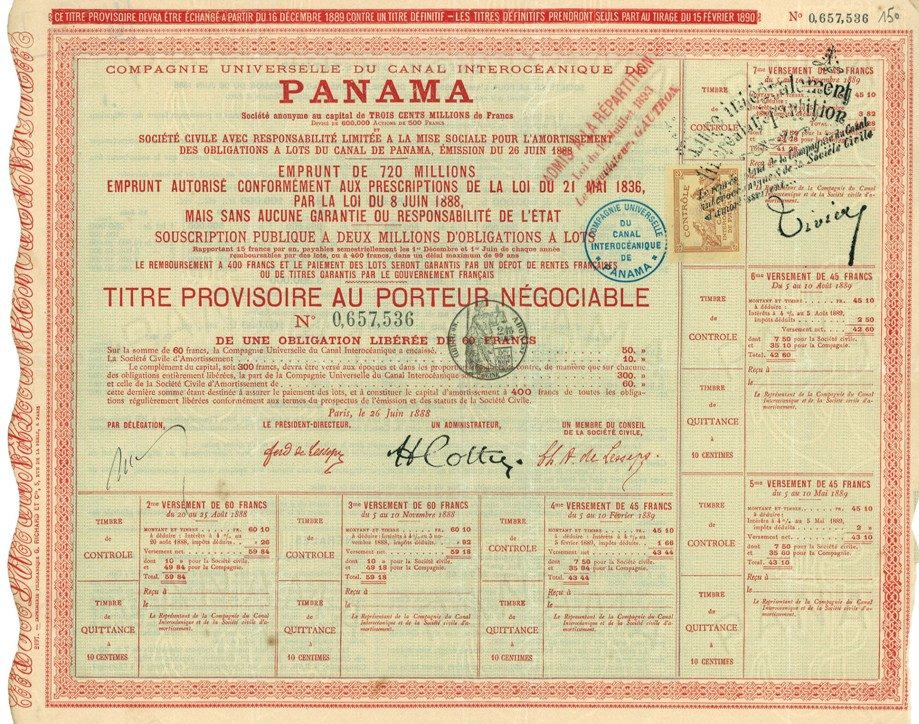
In 1888 the lottery loan for 720.000 million francs was authorised. But by now the Panama Canal company had come in even more dire straits. Only a year later the company went bankrupt and some 800.000 French investors lost their savings. Many amongst them could ill afford to lose anything at all.
In 1892 the French anti-Semitic political daily, La Libre Parole, started the scandal with a series of articles. Its first source was a disgruntled banker who had quarrelled with de Lesseps. Almost daily the paper added bits and pieces to the story, accusing an ever-widening number of individuals. When other Paris papers followed suit, an official investigation was started. Baron de Reinach killed himself while Herz and Arton both made a run for it. In the song Les Aventures d’Arton it is hinted that the French government was not eager to arrest him, afraid of new revelations.
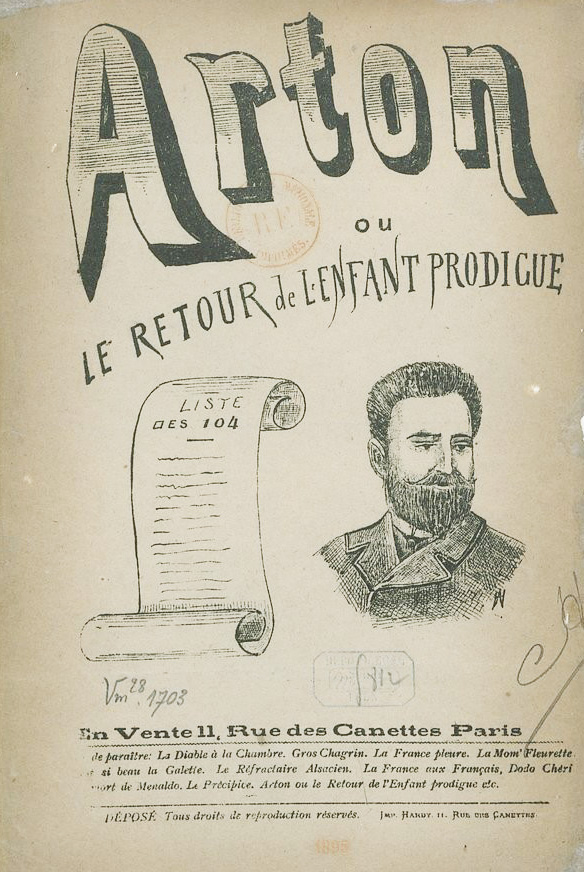
The owner of La Libre Parole was Edouard Drumont, a devout catholic and the principal propagator of anti-Semitism in France. His book La France Juive, with full-fledged diatribes against the Jews, may be regarded as the beginning of the anti-Semitic movement in France. Drumont used the fact that the three main fixers of the lottery loan were of Jewish descent as a battering ram. His continuous rabid articles fed the growing anti-Semitism in France which soon led to the Dreyfus affair (1894)
In the light of this, it comes as no surprise that the eager money-grubbers on the sheet music cover ‘Les Aventures d’Arton’ are depicted with enlarged stereotypical Jewish traits.
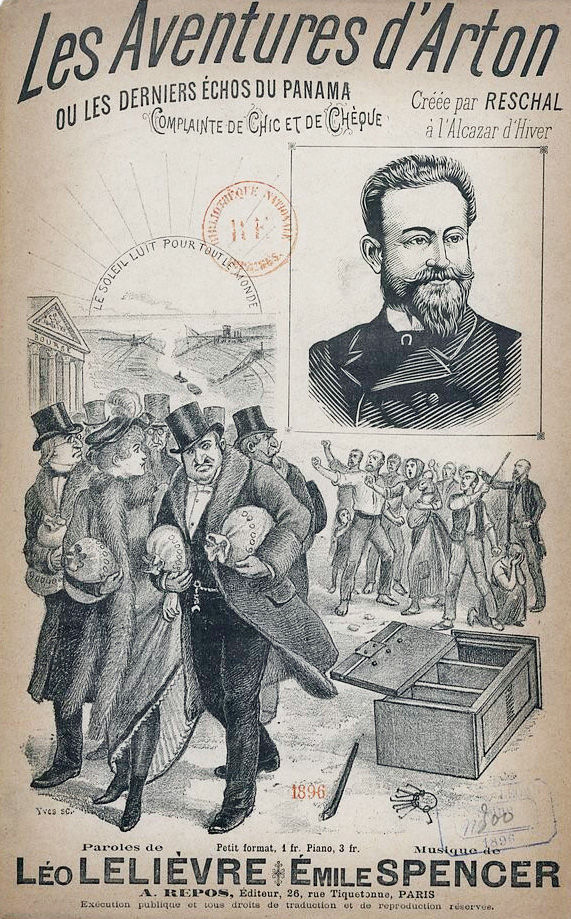
In the end, a large number of ministers were accused of taking bribes leading to a corruption trial against Ferdinand de Lesseps and his son amongst others. More than a hundred members of parliament were also charged.
With the Panama Affair politicians were no longer trusted in the public eye. And this brings us back to the start of the story: in ‘Les Aventures d’Arton’, he is called a ‘Panamiste’. Tripoteurs Panamistes imply persons who do shady business:
Il fit remettre des listes,
Et donna plusieurs millions
Aux tripoteurs panamistes,
Panamistes, panamistes,
Et bientôt les souscriptions
Firent monter les actions.
According to chronicler Claude Duneton, the first people to use the nickname ‘Paname’ were market gardeners who had to pay a daily tax on the produce in their carts when they entered Paris. At first, around 1903, only politicians and rich Parisians were called Panamistes. Later, it was Paris —the city itself where these sharks lived— which was tagged Paname.
Gradually, in the second decade of the twentieth century, Paname became a more gentle nickname. Around 1917 the French soldiers affectively designated Paname as the city of their dreams. ‘Revoir Paname’ was their intimate desire in the trenches.
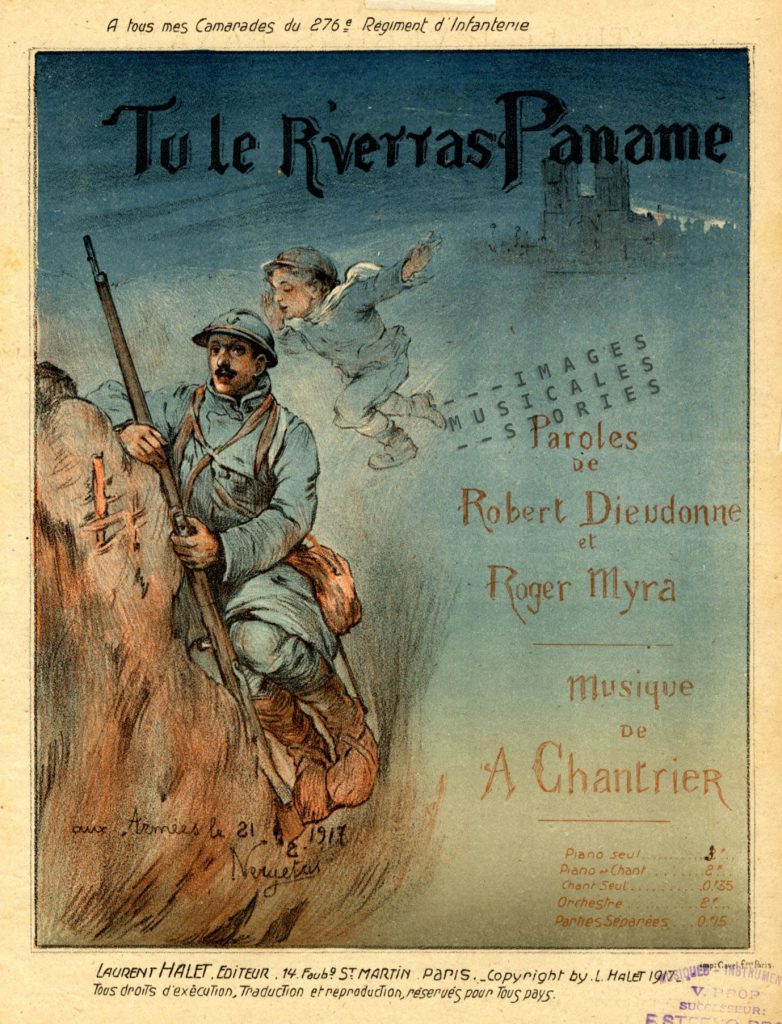
The word Paname spread further after the end of the war, especially in the cabarets and music halls of the twenties and thirties.
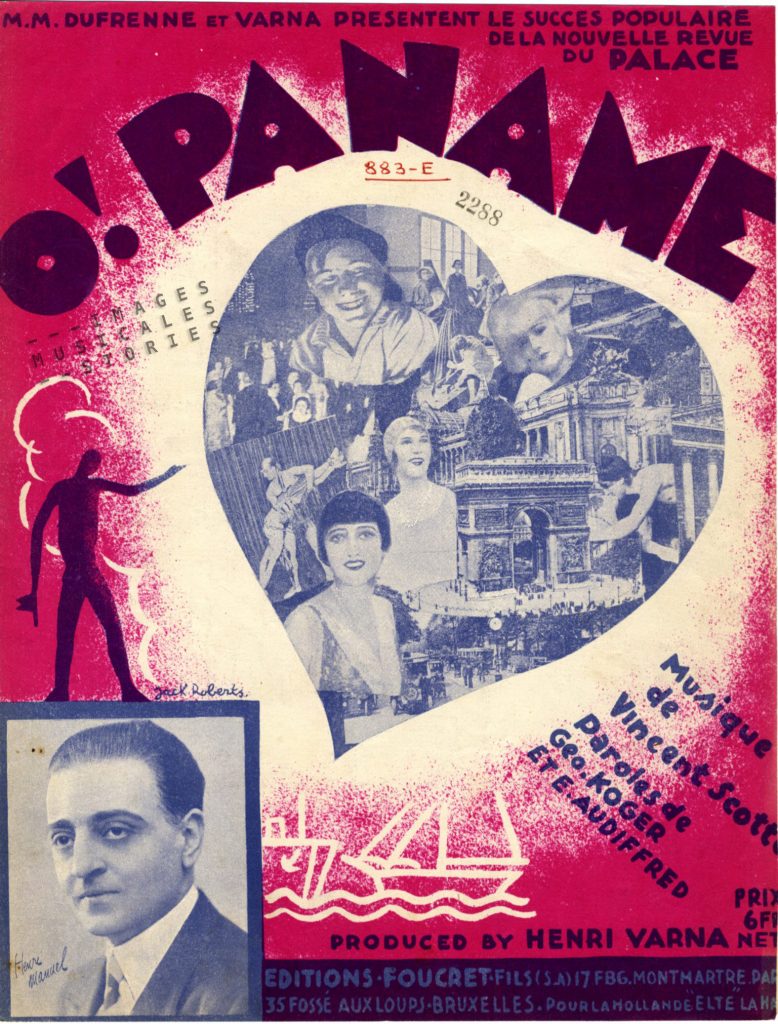
Today, using the phrase “I’m going to see Paname” to express a longing for Paris is terribly old-fashioned.
Umm, old-fashioned?
Time to update the titles of our collection: ‘La meuf de Sept-cinq’.
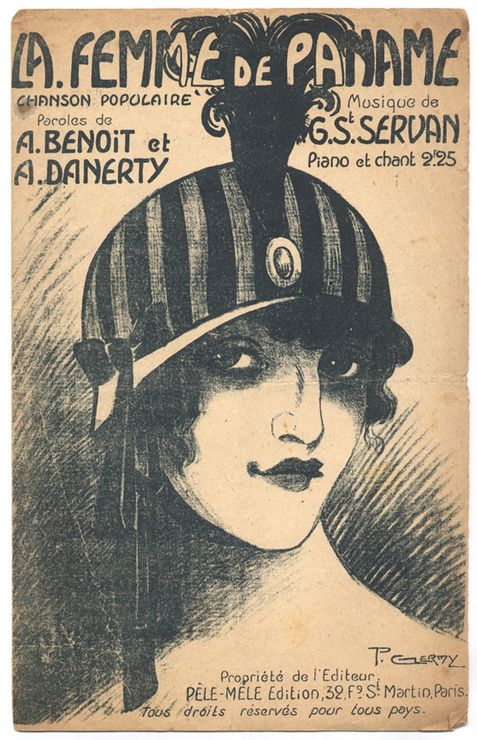

Oh, wat leuk deze aflevering. Ik lees ze allemaal, maar deze vind ik wel erg goed gelukt. Veel was volstrekt nieuw voor mij, maar dat geldt voor wel meer en zegt niet zoveel. De update is, laten we zeggen: interessant. Mijn favoriete versie, afgezien van die van de auteur zelf dan, blijft toch:
https://www.youtube.com/watch?v=bVa9H8dI_OM